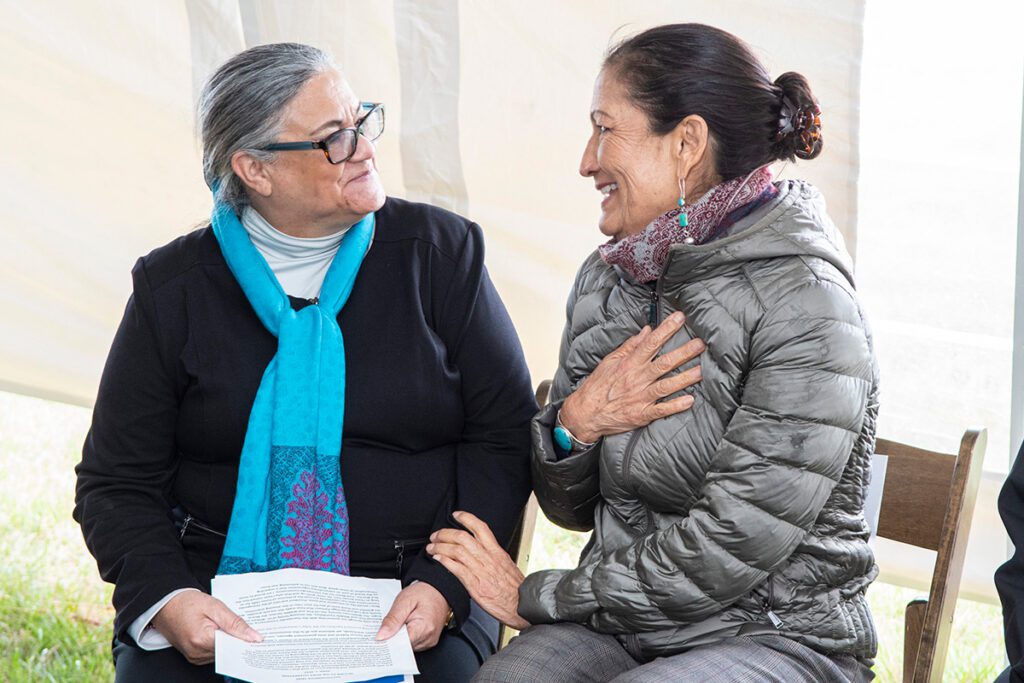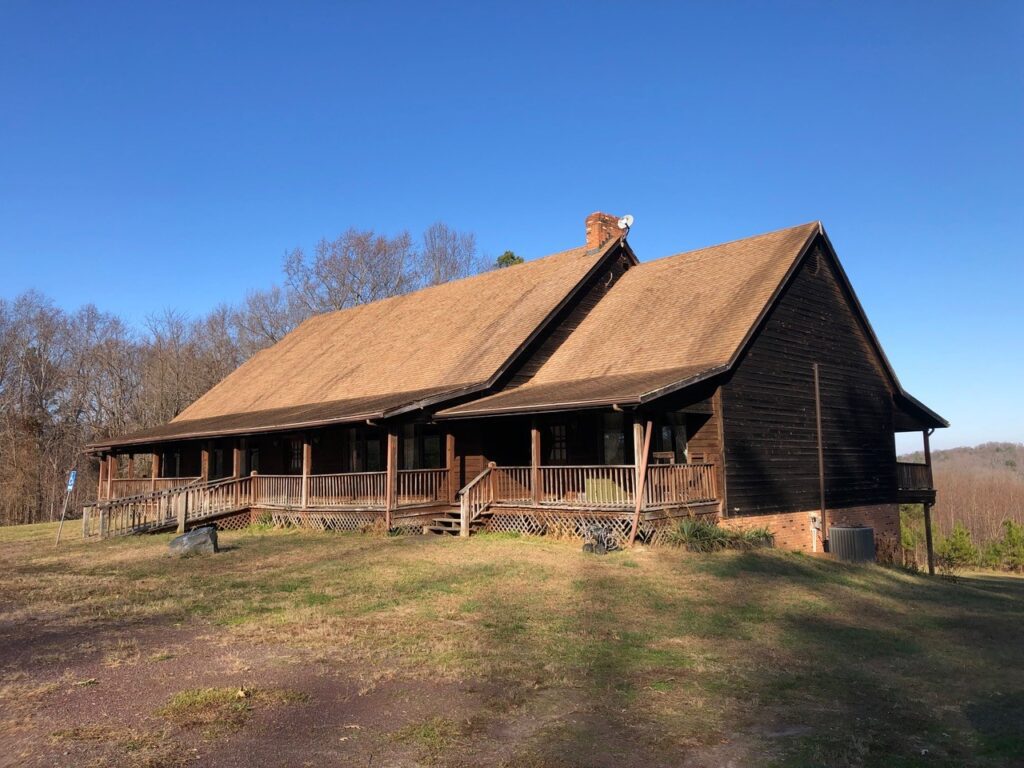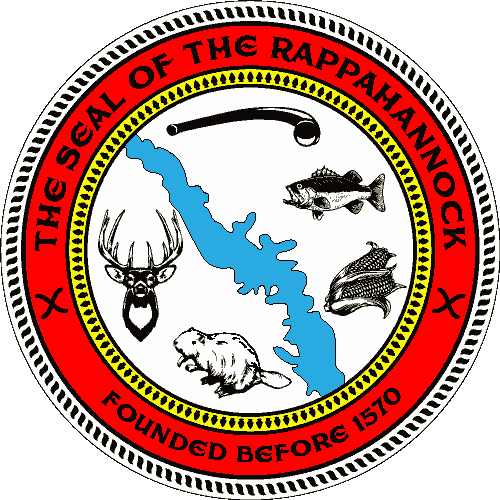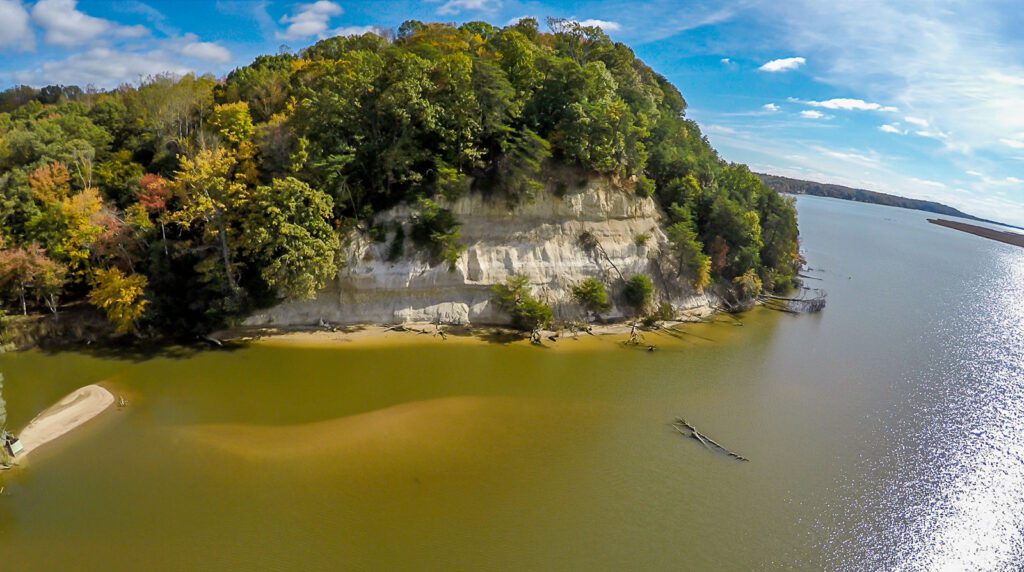Written by Aniyah Mulligan (Communications Coordinator, Rappahannock Tribe), Patricia Morris (Marketing & Planning Specialist, Rappahannock Tribe), Jody Couser (Senior Vice President of Communications, Chesapeake Conservancy)
In September 2023, The Conservation Alliance (TCA) awarded a grant to Chesapeake Conservancy in support of the project, “Rappahannock Return to the River: Restoring Tribal Land for Conservation.” The funding was to support the acquisition of a 703-acre property at Fones Cliff above the Rappahannock River in Virginia. Once acquired, this land will be returned to the Tribe for their stewardship under a co-management arrangement with US Fish and Wildlife Services (FWS). Fones Cliffs is a critical habitat for resident and migratory bald eagles and other birds, and is an incredible location for birders, hikers, and boaters to explore, while learning about the history and conservation efforts of the Tribe. Protecting this landscape will create access for the Tribe, recreationists, and so many others for generations to come.
Who are the Rappahannock People?
Running and flowing for 195 miles, the Rappahannock River hosts the ancestral homeland of the Rappahannock Tribe. Nestled across the river and just north of Tappahannock, Virginia, in Richmond County, Fones Cliffs is where generations of Rappahannock citizens lived for thousands of years and their knowledge, tradition, and identity were formed. More than 350 years after being displaced by colonization, they recently acquired some of their ancestral homeland.
The Rappahannock people resided on Fones Cliffs as a strategic method. The high elevation allowed them to see approaching people, whether guests or enemies. Chief Anne Richardson of the Rappahannock Tribe reflects on tribal history of being able to see “fires of other villages, you could hear the drums in neighboring villages along the water because the acoustics are so wonderful.” (Ancient cliffs are revealing lost tribal histories | WVTF.)
The eradication of the Rappahannock people began in the mid-1600s when they had their first encounter with English explorer John Smith and his men. Smith mapped out the entire region of the cliffs, which included Rappahannock villages and towns, eventually leading to the colonization of their sacred land. Despite having treaties and agreements established between the Rappahannocks and the British Crown, the Tribe was met with banishment throughout Virginia.
Home to one of the largest concentrations of bald eagles in the continental United States, Fones Cliffs and the surrounding landscape have played a significant role in restoring the eagle population. The cliffs have been designated as part of an Important Bird Area of Global Significance by the National Audubon Society.
“The eagle to us is a sacred bird, and there is a major spiritual connection to them. It’s like watching an angel come in. You’re in awe of the majestic bird that comes, and you know that he’s come to be with you. You don’t just see them every day,” described Chief Anne of the Rappahannock Tribe.
How did the Tribe move forward?
The land back movement for the Rappahannock people began with a 1-acre donation from Virginia Warner in 2017. Located in the Fones Cliffs region and surrounded by U.S. Fish and Wildlife Service (FWS) land, this acre of land sparked a relationship with the conservation community that took the Rappahannocks even further with their return to the river.
After touring the land and learning about the cultural, spiritual, and historical significance of the land in 2021, a generous donation from the Angle family allowed the Chesapeake Conservancy to purchase all 456 acres and then donate a conservation easement to the U.S. Fish and Wildlife Service (FWS). The remaining fee title was donated to the Rappahannock Tribe, creating the first instance in the United States where FWS has held a conservation easement on property owned by a federally recognized tribe.
It was truly a spiritual call back home for the Rappahannock people. They were once again able to roam boundlessly on their land, just as their ancestors did over 350 years ago.
April 1, 2022 was the official celebration day for the land acquisition of Fones Cliffs. Chief Anne Richardson and dozens of Rappahannock citizens gathered with the United States Secretary of the Interior Deb Haaland, the first Native American Secretary of Interior, and many others for a day of pure exuberance.

What does the future look like for the Cliffs?
Fones Cliffs is the driving factor for the Tribe’s return to the river. While the Tribe and FWS work together to steward the land, the main objective is to use the property to promote Tribal history, culture, and Indigenous environmental education. With the Rappahannock people being denied access to the Cliffs for so many generations, they wish to open the region to the public so everyone can experience the breathtaking land that is Fones Cliffs.
Additionally, the Tribe plans to work alongside FWS to initiate the first Indigenous Conservation Education Center where people can come be immersed in traditional history and activities of the Rappahannock people.
Unfortunately, the Rappahannock River currently faces a new threat as Caroline County has proposed to build a data center that would take 13.9 million gallons of water from the Rappahannock River per day and dump water waste into the Mattaponi River – threatening the lands of the Mattaponi and Upper Mattaponi Tribes as well.
If permitted, the data center in Caroline County will not only severely impact Fones Cliffs but also the Rappahannock River as a whole. At the conclusion of 2023, the river was placed on drought watch, so it is devastating to consider what this could mean if the data center has the chance to withdraw millions of gallons of valuable water.

Where do we go from here?
After facing generations of discrimination, erasure, and loss of their ancestral homelands, the Rappahannock Tribe seeks to not only conserve but to restore their river lands to health. Fones Cliffs has faced changes since the seventeenth century but thankfully it is now protected against development and will serve the public as a recreational and learning space, as well as a sacred space for the Rappahannock people for the rest of time.





